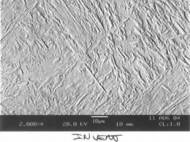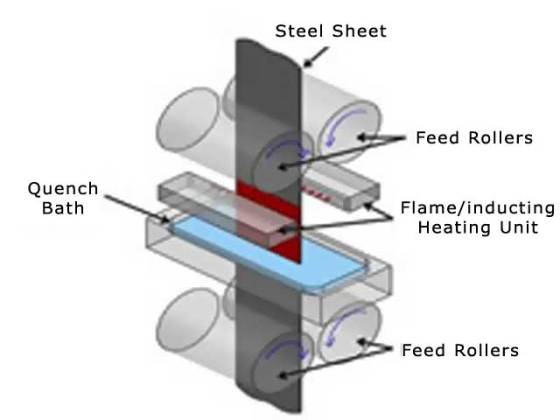Lighter and stronger steel needs less than 10 seconds to be processed
 A Detroit entrepreneur surprised university engineers when he invented flash processing – a heat-treatment process which lasts only 10 seconds and it makes steel stronger and more shock-absorbing than the most common titanium alloys used by industry. Now the entrepreneur is working with researchers at Ohio State University (OSU) to better understand the science behind the new treatment.
A Detroit entrepreneur surprised university engineers when he invented flash processing – a heat-treatment process which lasts only 10 seconds and it makes steel stronger and more shock-absorbing than the most common titanium alloys used by industry. Now the entrepreneur is working with researchers at Ohio State University (OSU) to better understand the science behind the new treatment.
The basic process of heat-treating steel has changed little in the modern age, and Suresh Babu, an associate professor of materials science and engineering at OSU, and Director of the National Science Foundation (NSF) Center for Integrative Materials Joining for Energy Applications, is one of few researchers worldwide who still study how to tune the properties of steel in detail. Yet, when inventor Gary Cola initially approached him, Babu didn’t know what to think.
Cola, a self-taught metallurgist, showed them his proprietary lab setup at SFP Works, LLC., where rollers carried steel sheets through flames as hot as 1100 degrees Celsius and then into a cooling liquid bath. Though the typical temperature and length of time for hardening varies by industry, most steels are heat-treated at around 900 degrees Celsius for a few hours. Others are heated at similar temperatures for days, but Cola’s entire process took less than 10 seconds.
He claimed that the resulting steel, now trademarked as Flash Bainite, was 7 percent stronger than martensitic advanced high-strength steel. Cola further claimed that his steel could be drawn – that is, thinned and lengthened – 30 percent more light than martensitic steels without losing its enhanced strength.
He partnered with Ohio State to provide research support for Brian Hanhold, who was an undergraduate student at the time, and Tapasvi Lolla, who subsequently earned his master’s degree working out the answer. Using an electron microscope, the researchers discovered that Cola’s process did indeed form martensite microstructure inside the steel. But they also saw another form called bainite microstructure, scattered with carbon-rich compounds called carbides.
“We think that, because this new process is so fast with rapid heating and cooling, the carbides don’t get a chance to dissolve completely within austenite at high temperature, so they remain in the steel and make this unique microstructure containing bainite, martensite and carbides”, said Babu.
Lolla pointed out that this unique microstructure boosts ductility (meaning that the steel can crumple a great deal before breaking) making it a potential impact-absorber for automotive applications. The technology shows great potential in car production industry where vehicles could become lighter, stronger, and more fuel-efficient.
Hanhold is working to carry over the findings into welding engineering, where he hopes to solve the problem of heat-induced weakening during welding. High-strength steel often weakens just outside the weld joint, where the alloy has been heated and cooled. Hanhold suspects that bringing the speed of Cola’s method to welding might minimize the damage to adjacent areas and reduce the weakening.
For more information, you can read the article published in the journal Materials Science and Technology named: “Development of rapid heating and cooling (flash processing) process to produce advanced high strength steel microstructures” (PDF).










WOW! This finding is huge!
Other engineers manage to improve steel performance by 1% or less per year.
30% lighter vehicles should help the effort to lower fuel consumption.